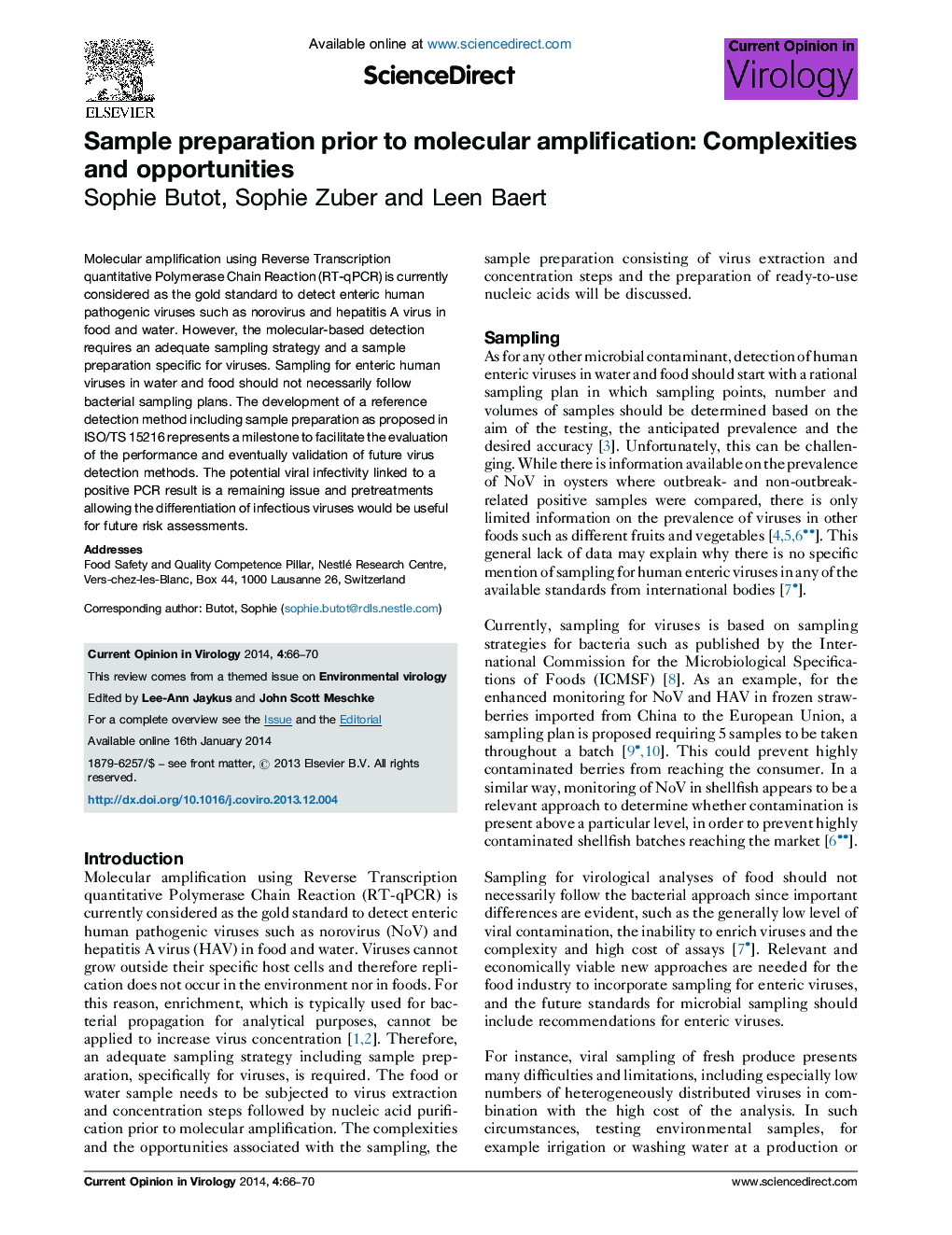| کد مقاله | کد نشریه | سال انتشار | مقاله انگلیسی | نسخه تمام متن |
|---|---|---|---|---|
| 5806736 | 1555922 | 2014 | 5 صفحه PDF | دانلود رایگان |
- Sampling for enteric human viruses in water and food should not necessarily follow bacterial sampling plans.
- Sample preparation consisting of virus extraction, concentration and nucleic acid purification is challenging.
- Development of a reference detection method as proposed in ISO/TS 15216 is a milestone.
- Future risk assessments will benefit from analytical methods which differentiate infectious from non-infectious viruses.
Molecular amplification using Reverse Transcription quantitative Polymerase Chain Reaction (RT-qPCR) is currently considered as the gold standard to detect enteric human pathogenic viruses such as norovirus and hepatitis A virus in food and water. However, the molecular-based detection requires an adequate sampling strategy and a sample preparation specific for viruses. Sampling for enteric human viruses in water and food should not necessarily follow bacterial sampling plans. The development of a reference detection method including sample preparation as proposed in ISO/TS 15216 represents a milestone to facilitate the evaluation of the performance and eventually validation of future virus detection methods. The potential viral infectivity linked to a positive PCR result is a remaining issue and pretreatments allowing the differentiation of infectious viruses would be useful for future risk assessments.
Journal: Current Opinion in Virology - Volume 4, February 2014, Pages 66-70
